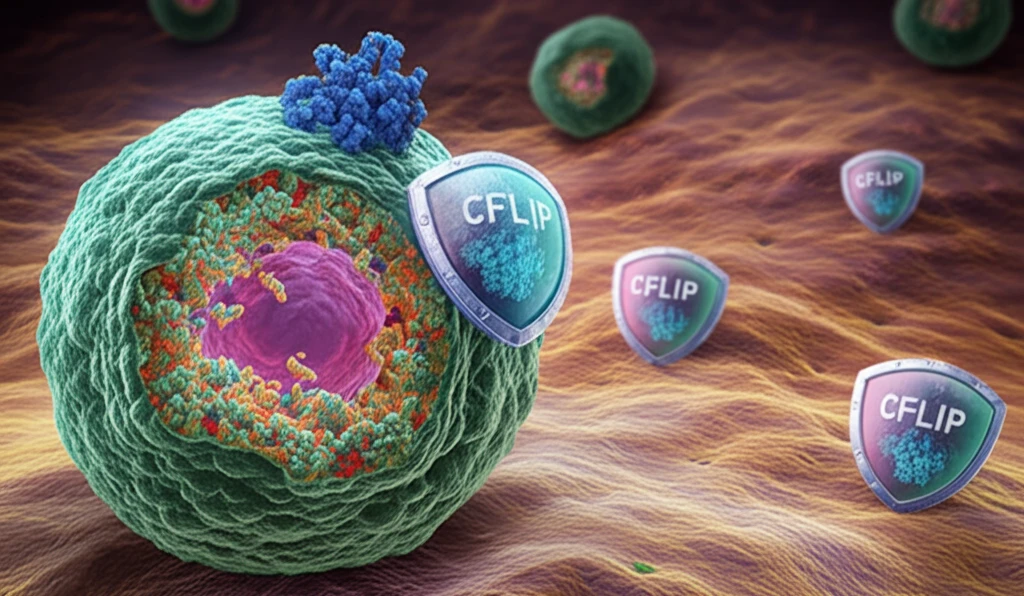
Decoding Cancer's Survival Code: How to Outsmart Resistance to Therapy
"Scientists unlock the role of cFLIP in epithelial-mesenchymal transition (EMT), revealing a potential key to overcoming drug resistance in cancer treatment."
Cancer remains a leading cause of death worldwide, with treatment resistance posing a significant hurdle in improving patient outcomes. While advancements in screening and medical interventions have extended overall survival rates, cancer cells often develop mechanisms to evade the effects of therapy, leading to disease progression and recurrence. Understanding these resistance mechanisms is crucial for developing more effective cancer treatments.
One such mechanism is the epithelial-to-mesenchymal transition (EMT), a process where cancer cells transform from a tightly bound epithelial state to a more mobile and invasive mesenchymal state. EMT not only enhances the ability of cancer cells to spread but also makes them more resistant to apoptosis, or programmed cell death, which is how many cancer therapies work. This dual threat makes EMT a prime target for researchers seeking to improve cancer treatment efficacy.
Recent research has shed light on the role of a protein called cFLIP (cellular FLICE-like inhibitory protein) in mediating the resistance to apoptosis during EMT. By understanding how cFLIP functions, scientists are developing new strategies to resensitize cancer cells to therapy and improve treatment outcomes. This article explores the critical role of cFLIP in EMT and its potential as a therapeutic target.
Unlocking the EMT Puzzle: How cFLIP Protects Cancer Cells

Epithelial-to-mesenchymal transition (EMT) is a fundamental process in cancer progression. During EMT, cancer cells undergo significant changes, losing their cell-to-cell adhesion and gaining the ability to invade surrounding tissues. This transformation is associated with increased resistance to anoikis, a form of cell death triggered by the loss of attachment to the extracellular matrix.
- cFLIP's Role: cFLIP, particularly the short form (cFLIPS), inhibits apoptosis by interfering with the formation of the death-inducing signaling complex (DISC), which is required for caspase activation.
- How EMT Changes cFLIP: During EMT, cancer cells often upregulate cFLIP expression, increasing their ability to evade apoptosis.
- The Result: This increased cFLIP activity protects cancer cells from the effects of chemotherapy and other apoptosis-inducing treatments.
The Future of Cancer Therapy: Targeting cFLIP
The discovery of cFLIP's critical role in EMT-associated apoptosis resistance opens new avenues for cancer therapy. While the exact mechanisms of cFLIP downregulation by small molecules are still under investigation, the therapeutic implications are significant. Future research will focus on developing more potent and specific cFLIP inhibitors, as well as exploring combination therapies that target both EMT and apoptosis resistance. These advancements hold the promise of improving cancer treatment outcomes and ultimately saving lives.
